No Studio? No Problem: How to Create Stunning Head Shots in Any Location, I promised to follow up with some specific examples, including behind-the-scenes shots and lighting diagrams. Without further ado, here are 5 simple lighting setup for portraits on-location, perfect for beginning photographers and the working photographer too.
Using window light plus a reflector is one of my favorite lighting setups for head shots and indoor portraits because the light is generally very flattering. In this behind-the-scenes look at a head shot session for a day spa in Spokane, I had brought all my lighting gear with me but ended up just using the natural light coming in from the giant windows in the lobby.
I tried shooting from a few different angles but ended up liking the lighting and background best when shooting from straight on with the window directly behind. An assistant is holding a reflector below the subject’s torso to fill in any shadows under the eyes.
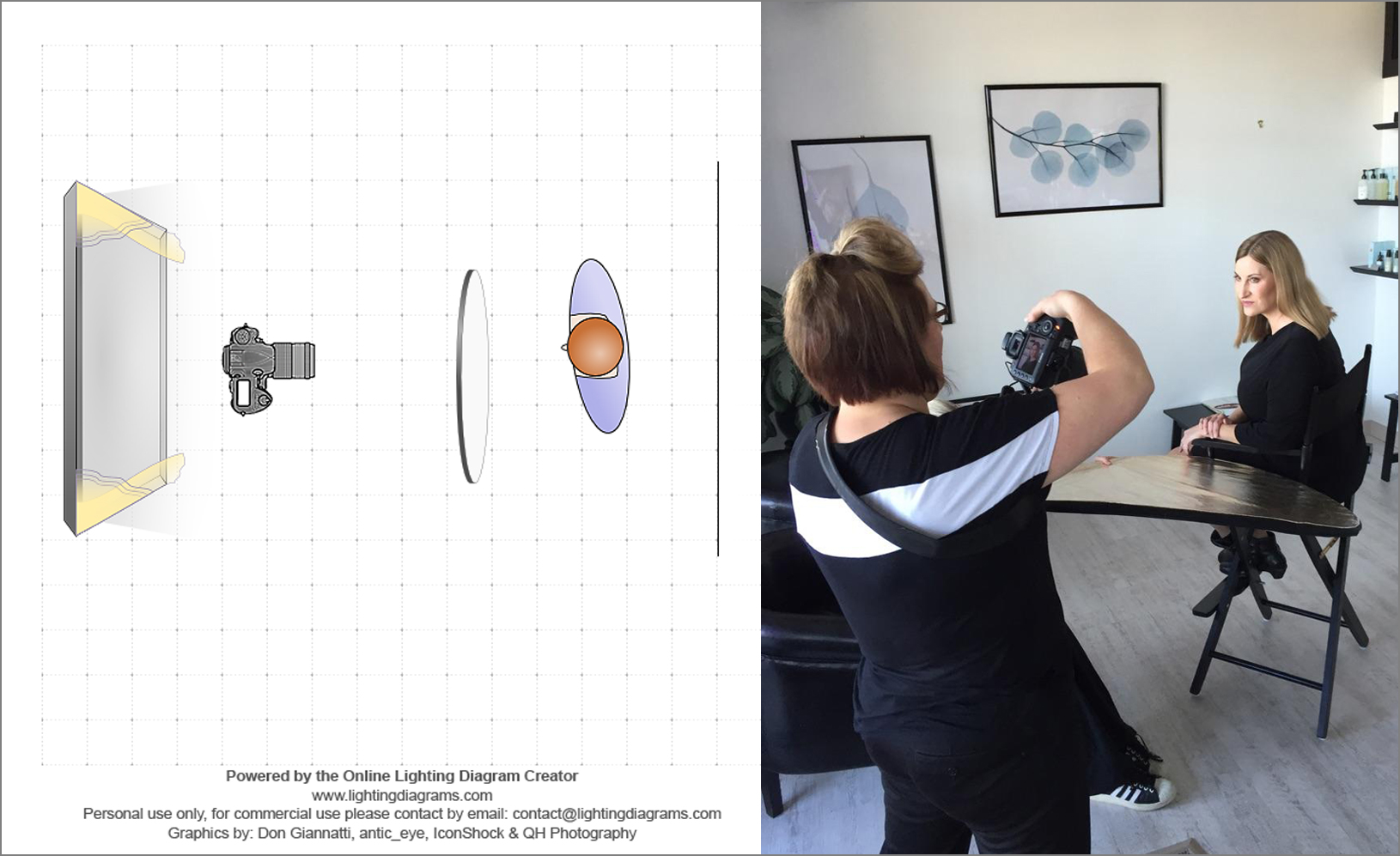
SIDE WINDOW LIGHT + REFLECTOR OPPOSITE
Window light coming in from the side and then bouncing light from the opposite side with a reflector is another favorite lighting setup. Any corner near a window works great for this. I took this head shot for a local property manager in a corner near a huge window in my living room.
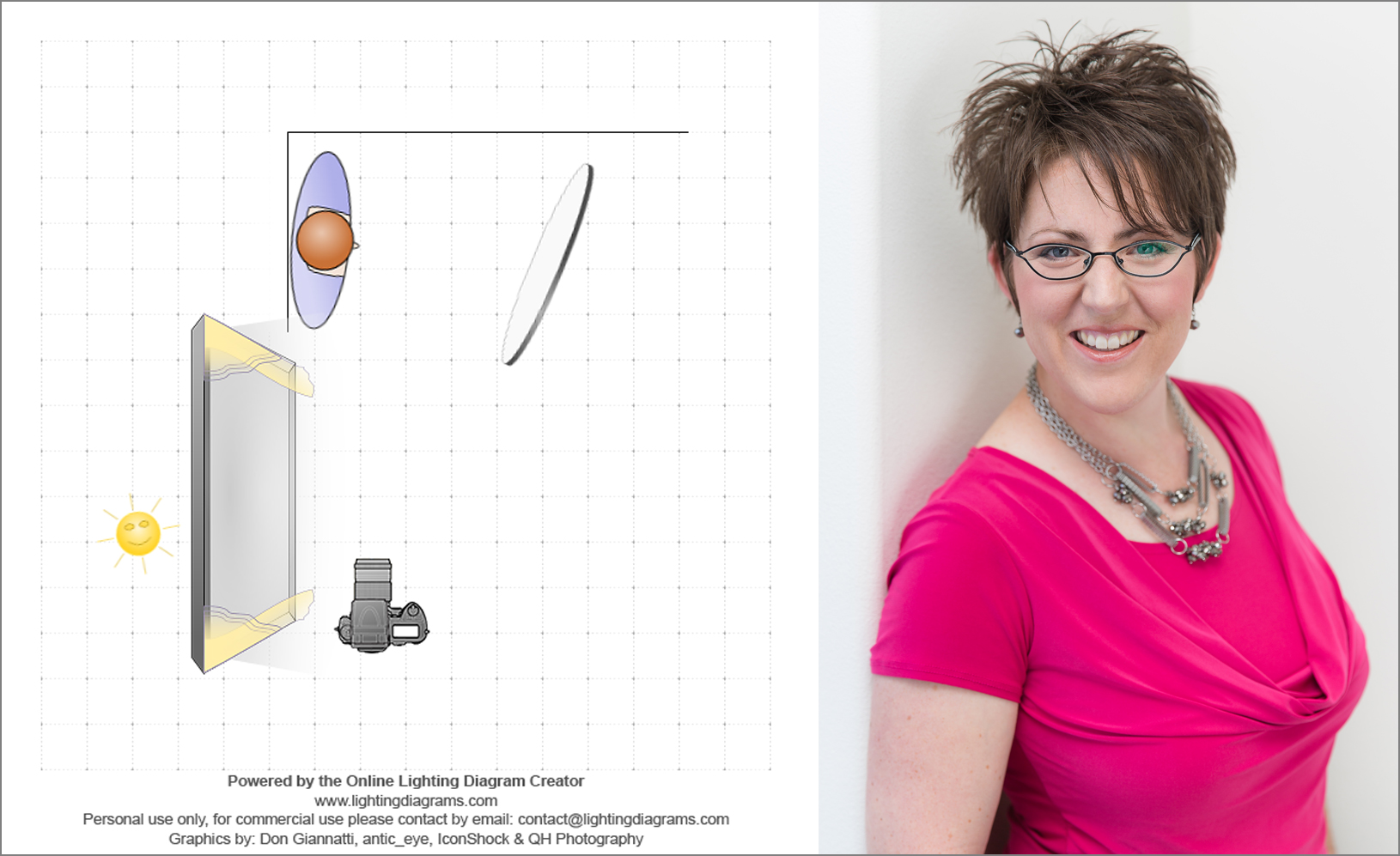
I placed my subject in the corner on the left and then had an assistant hold the reflector as close to her face as we could get it without it showing up in the frame, bouncing some of the light to fill in the shadowed area of the face.
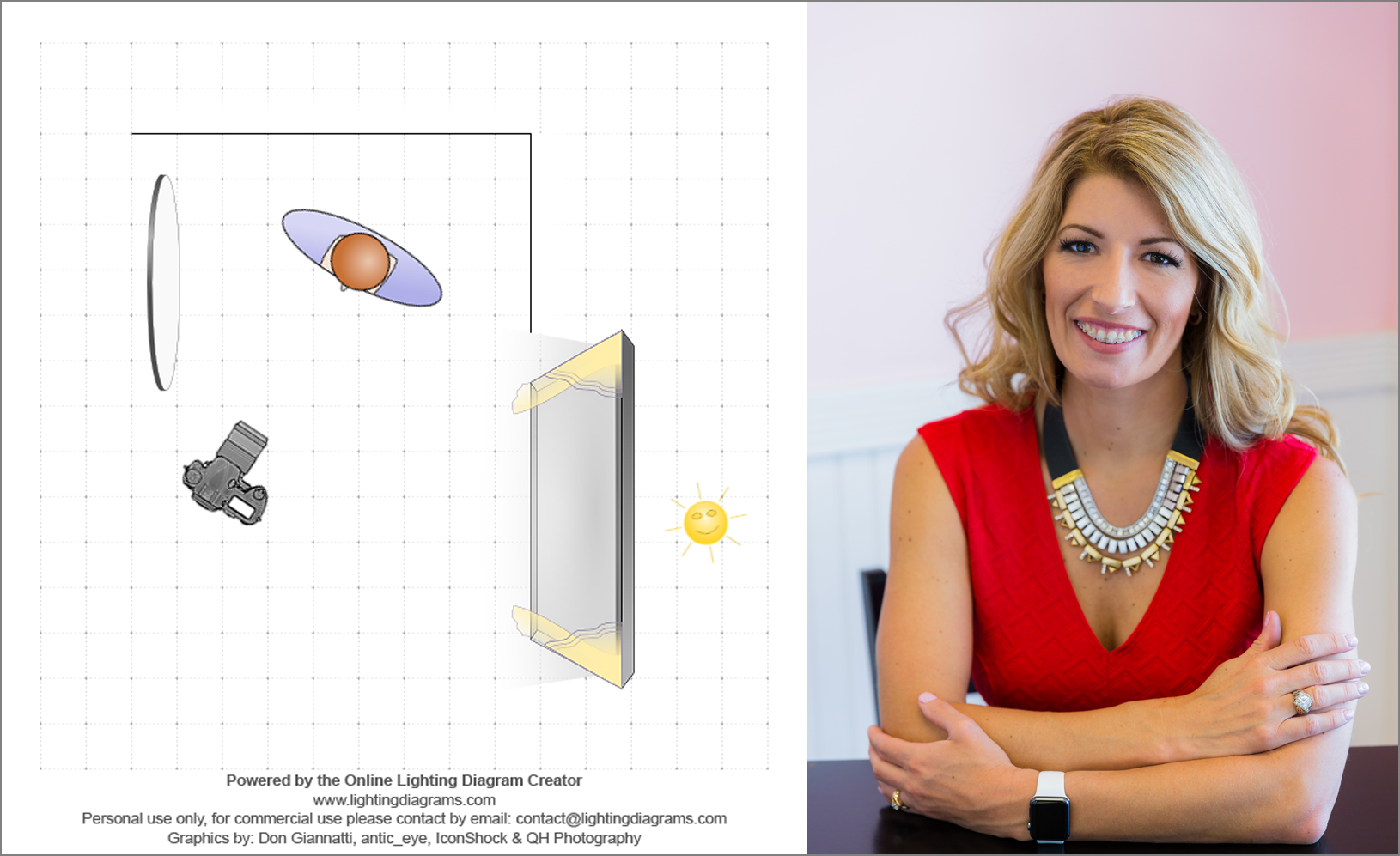
The image above is another example of a similar setup with the subject sitting at a table in the corner of a cupcake shop. I had an assistant hold the reflector.
ON-CAMERA FLASH BOUNCED OFF WALL OR CEILING

In this example taken at Spokane Gymnastics, I’m using a Canon Speedlite attached to my camera hotshoe. I directed the flash upward and to camera right where there was a white corner and ceiling.
The wall and ceiling ended up acting as a large softbox when the light bounced back on to the face of my subject (below). This is a great and common trick if you have a white wall and/or ceiling available to you.
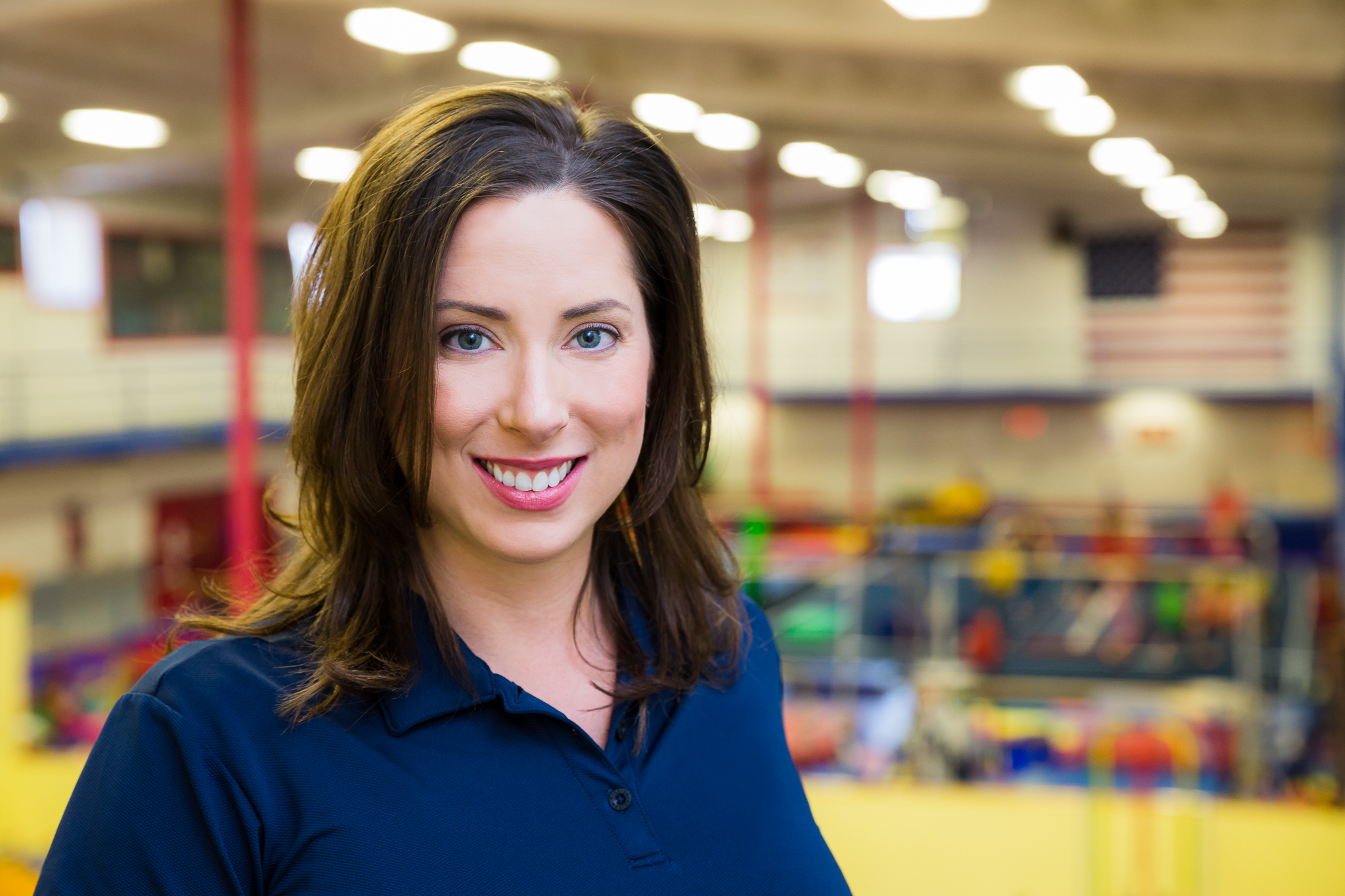
If the wall is a color other than white it will cause a color cast to affect the tones of your subject that can be difficult to adjust. You could have an assistant hold a reflector to the side of your subject and bounce your on-camera flash off the reflector for a similar effect.
ONE LIGHT IN AN UMBRELLA SOFTBOX
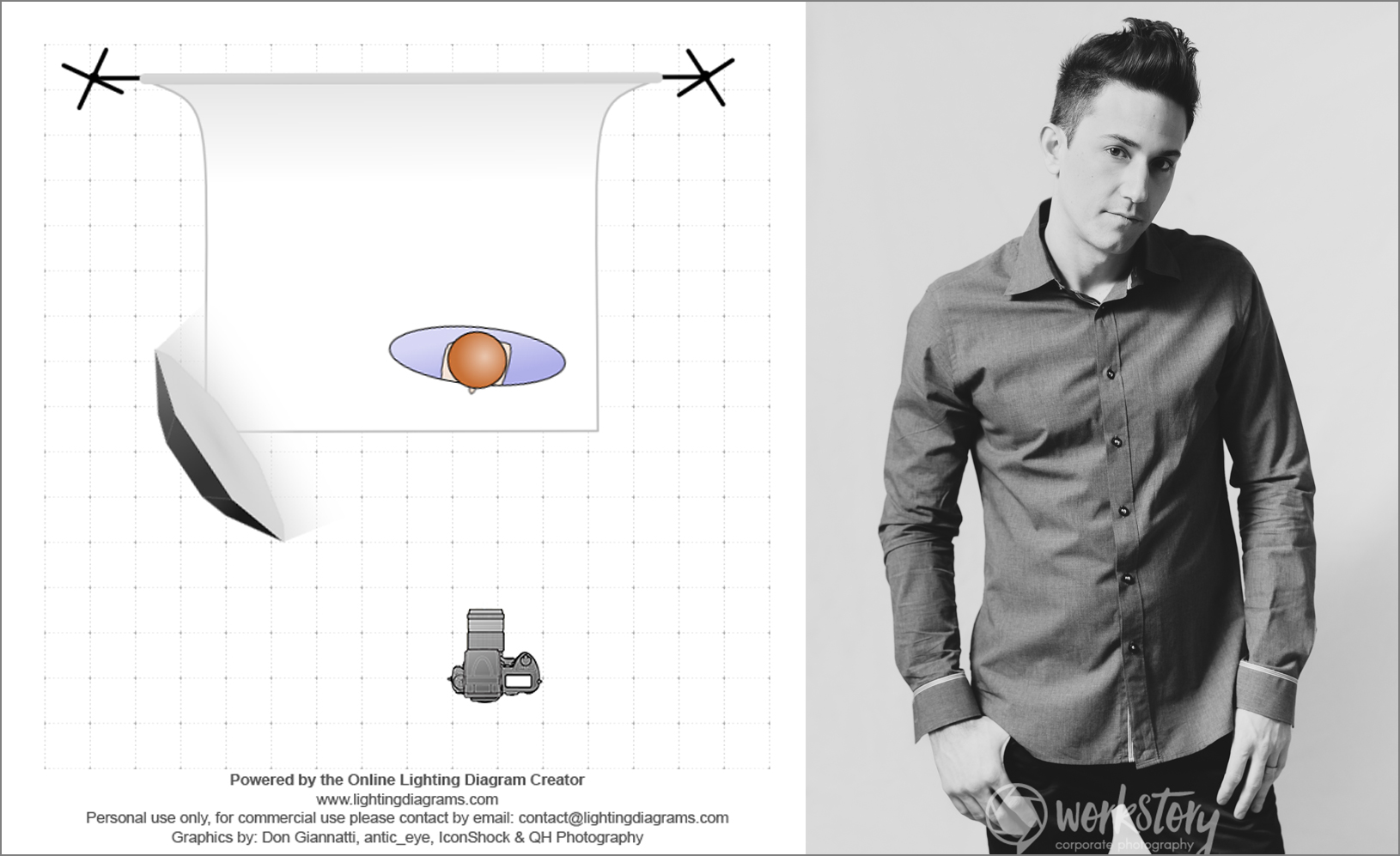
When natural light isn’t available, which is often the case in Washington, especially during the winter when it’s dark by 4:00 p.m., having an umbrella that works with a speedlite is a must.
My favorite affordable umbrella for speedlites is this one by Neewer, which I used on this shoot for a Seattle tech evangelist. We shot these in his dining room and it was a really cramped, small space.
For a more dramatic look, I used only one light. For much of the shoot we used two lights with umbrellas, one on each side of him at a 45 degree angle. I used an inexpensive piece of white fleece clamped to a Backdrop Stand for the backdrop.
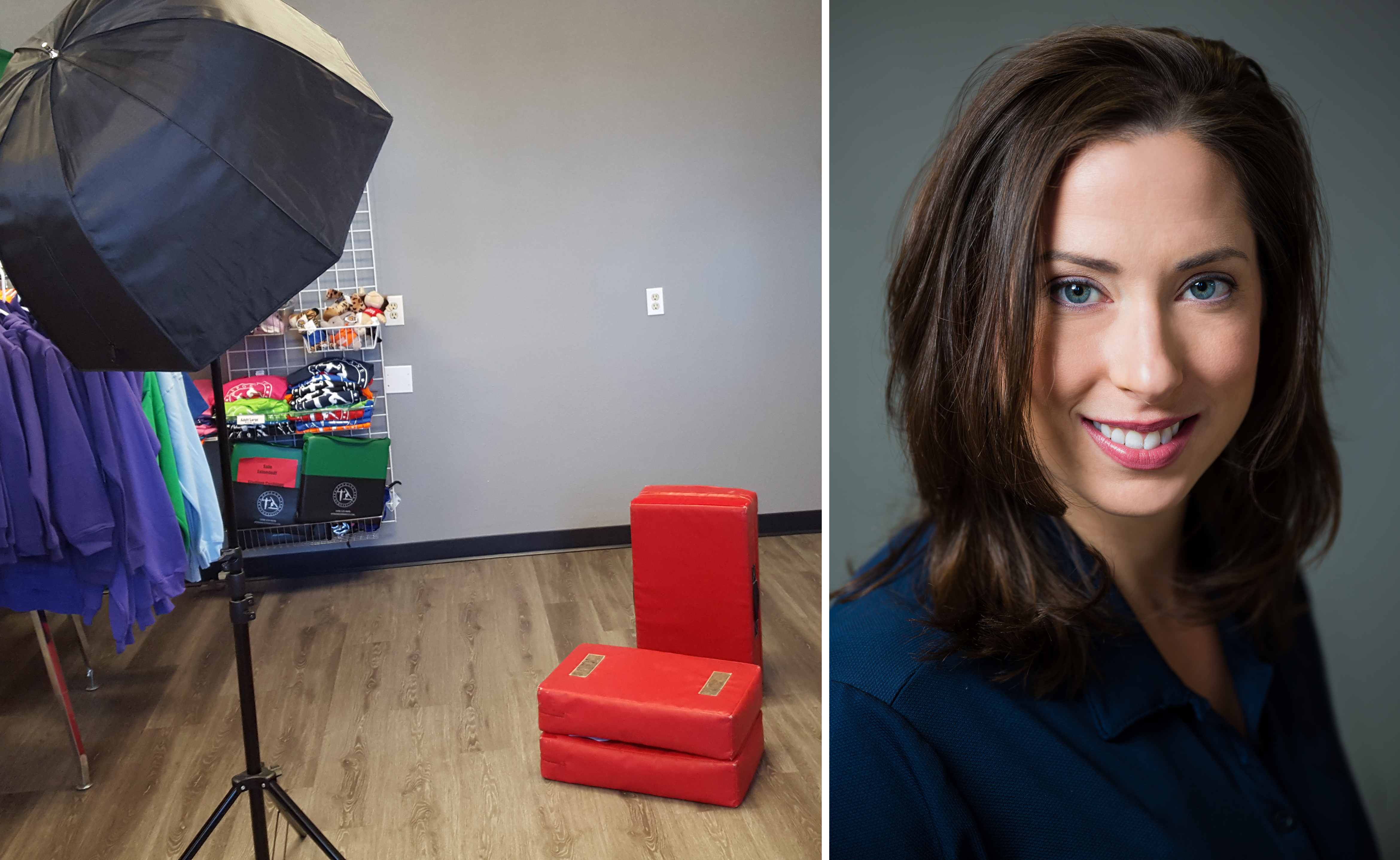
For this head shot session in the image above at Spokane Gymnastics, we had to shoot in the retail area of the gym because hundreds of kids were attending summer camp and the whole place was buzzing with activity.
This was the only quiet corner and the owner needed a head shot the next day for an upcoming press feature so we couldn’t reschedule. We cleared a space in the corner and used some gymnastics mats for apple boxes and my trusty umbrella softbox speedlite modifier.
This is definitely a more dramatic lighting look, with no fill light on the opposite side.
ONE LIGHT + REFLECTOR

If the shadows from one light are too dramatic for your taste, you can always bring in a reflector on the other side or below the model’s face (just like in the window-light examples above) to add fill to the shadow side of the face.
Alternately, you can add a second light, but that starts to get more complicated. To keep things simple, reflecting some of the light from a single light source is a great way to go. That’s exactly what I did here and this ended up being a favorite image of the client.




